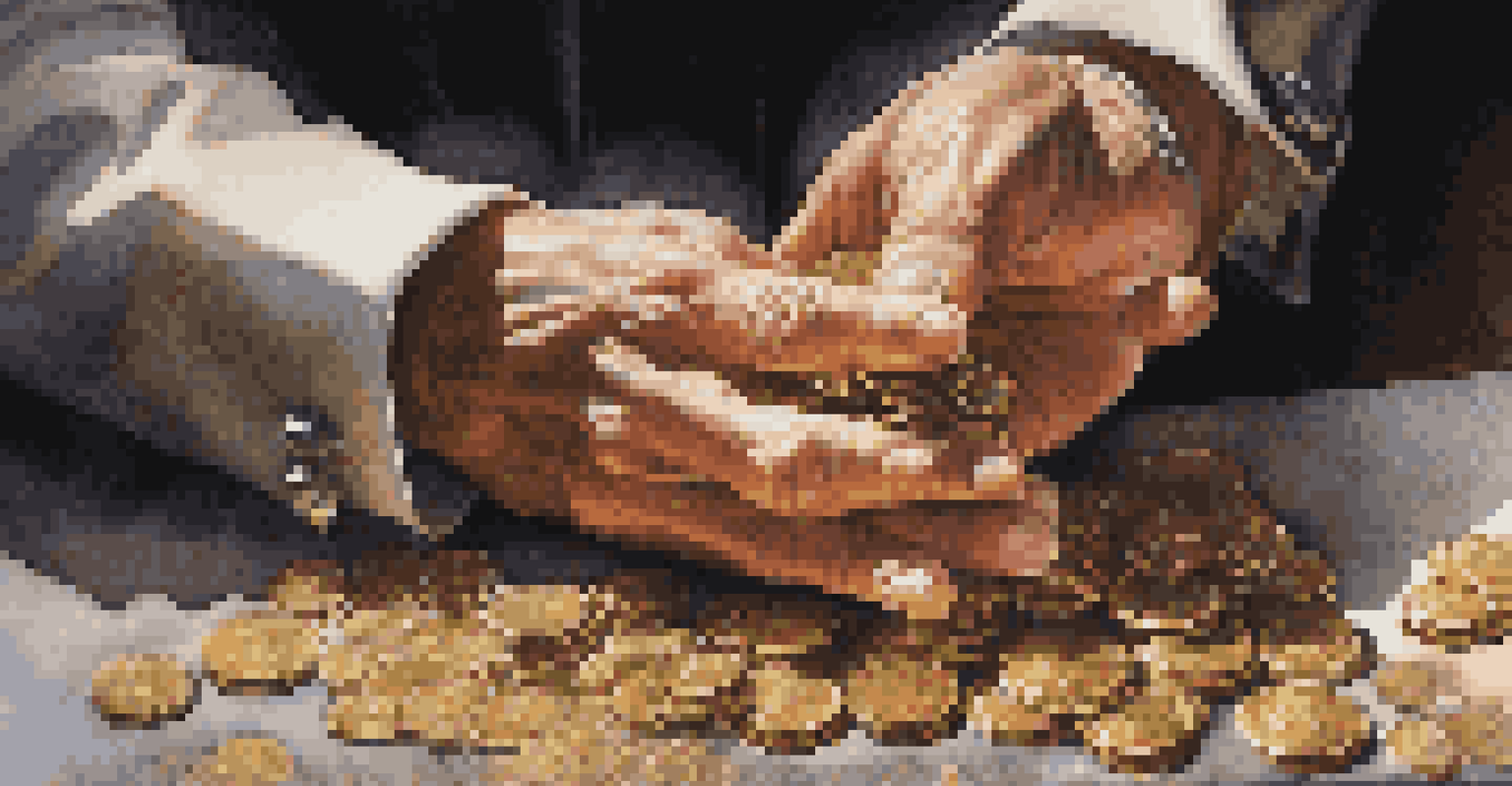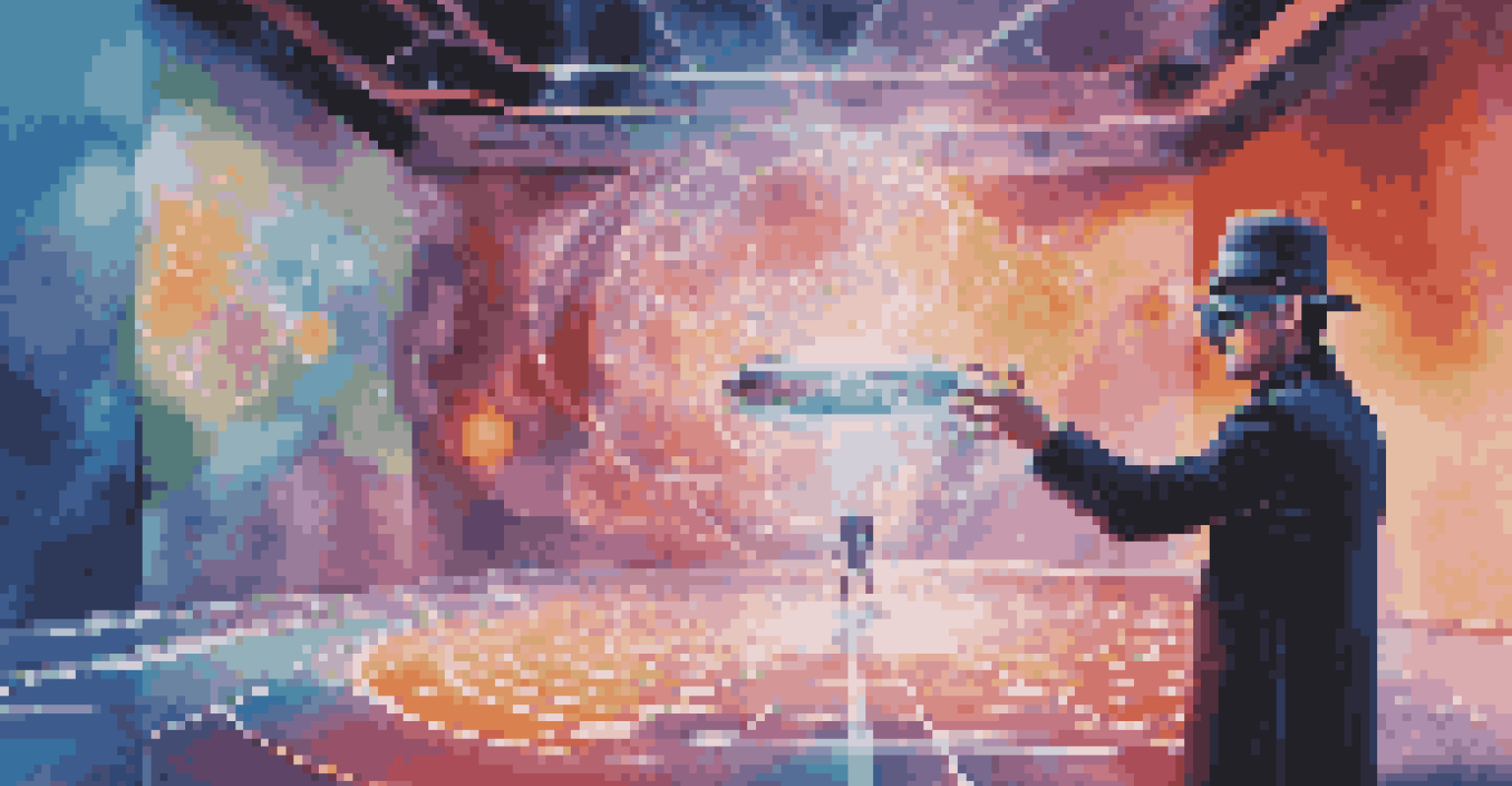The Science of Illusion: Understanding Perception in Magic

The Basics of Perception: How We See the World
Perception is the process by which we interpret sensory information. It involves not just what we see, but how our brains make sense of those visual cues. For example, when you look at a painting, your mind fills in gaps, helping you understand the overall image rather than just individual brush strokes.
The eye sees only what the mind is prepared to comprehend.
This filtering process means that our brains are constantly making assumptions based on past experiences. That's why two people can witness the same event and describe it differently. Understanding this can help us appreciate how magicians manipulate our perceptions to create illusions.
In magic, the goal is often to distract our minds and lead us to focus on specific elements while ignoring others. This is where the art of misdirection comes in, making it crucial to recognize how easily our perceptions can be influenced.
The Role of Attention in Illusions
Attention is a vital part of how we perceive the world, acting like a spotlight that highlights certain aspects while dimming others. Magicians exploit this by directing our attention to one area, while the real trick happens elsewhere. Think of a magician who gestures dramatically with one hand while performing sleight of hand with the other.

This concept is known as selective attention, and it plays a significant role in our daily lives, from how we navigate conversations to how we watch a performance. Studies show that when our focus is narrowed, we can miss crucial details that are right in front of us.
Perception Shapes Our Reality
Our brains interpret sensory information, leading to different perceptions of the same event.
By understanding how attention works, we can appreciate how magicians create their illusions. They are not just tricking us; they are tapping into the very mechanics of how our brains work.
Cognitive Bias: Our Brains Playing Tricks on Us
Cognitive biases are systematic errors in thinking that affect our decisions and judgments. They can lead us to make assumptions based on incomplete information. For instance, the confirmation bias makes us pay more attention to information that confirms what we already believe, which can be useful for a magician's narrative.
Magic is not about what you see, but what you feel.
Magicians often exploit these biases to enhance their tricks. By framing their performances in a way that aligns with our preconceived notions, they make their illusions more believable. This is why a magician might present a trick in a way that seems to validate our expectations, leading us to overlook the underlying mechanics.
Recognizing these biases in ourselves can help us appreciate the cleverness behind magic. It shows just how much our perceptions can be shaped, often without us even realizing it.
The Psychology of Surprise: Why We Love Magic
Surprise is a powerful emotion that can create lasting memories. When a magician pulls off an unexpected trick, the shock can elicit a strong reaction, making the experience memorable. This ties into the psychological principle that humans are wired to notice the unusual or unexpected.
In magic, surprise is often achieved through clever setups and misdirection. A skilled magician knows how to build suspense before delivering a punchline that leaves the audience gasping. This emotional rollercoaster not only entertains but also engages our minds in a unique way.
Attention is Key to Illusions
Magicians use selective attention to direct our focus, creating the illusion of trickery.
Understanding the psychology of surprise helps us appreciate why magic captivates so many people. It’s not just about the tricks; it's about the emotions they evoke and the stories they tell.
Illusions and Reality: The Thin Line Between Them
Illusions challenge our understanding of reality, prompting us to question what we perceive. A magician’s performance often blurs the line between what is real and what is not, making us reconsider our assumptions about reality. This cognitive dissonance can be both thrilling and thought-provoking.
For example, when a magician makes an object disappear, it forces us to grapple with the idea that our senses might not always tell the whole story. Our brains are conditioned to trust what we see, but magic invites us to question that trust.
Recognizing this can lead to deeper insights into both magic and our everyday lives. It encourages us to think critically about our perceptions and how they shape our understanding of the world.
The Social Aspect of Magic: Connection Through Illusion
Magic is as much about connection as it is about illusion. Performances often involve audience participation, creating a shared experience that fosters community. When we witness a trick together, we bond over our astonishment and delight, making the experience more memorable.
This social element is crucial for magicians, as they rely on audience reactions to enhance their performances. The laughter, gasps, and applause not only validate the magician’s skills but also create an atmosphere of shared wonder.
Magic Connects Us Socially
Magic fosters shared experiences, enhancing connections through collective astonishment.
Understanding this social dynamic can deepen our appreciation of magic. It’s not just about the tricks; it’s also about the relationships formed through shared experiences and emotions.
The Future of Magic: Technology and Perception
As technology evolves, so does the art of magic. Innovations like augmented reality (AR) are changing how illusions are created and experienced. Imagine wearing AR glasses that allow you to see magical elements that aren't really there, enhancing the illusion beyond traditional methods.
This integration of technology challenges traditional perceptions of magic, pushing the boundaries of what we consider an illusion. It invites a new generation of magicians to explore the intersection of art and technology, creating experiences that are both captivating and mind-bending.

Looking ahead, the potential for magic to evolve alongside technology is vast. It opens up exciting possibilities for how we experience and understand magic in the future, making it a thrilling time for both performers and audiences.